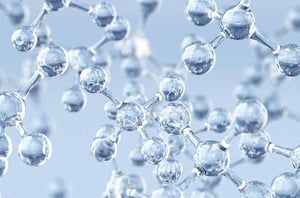
Hyaluronic Acid Solution Viscosity
Application Note Download
Rheology Modifiers
Rheology modifiers are common additives used in nearly every industry to adjust both the overall viscosity magnitude and control the non-Newtonian behavior such as shear thinning. It is often beneficial to access multiple decades in shear rate at several temperatures to thoroughly characterize these formulations.
Hyaluronic acid (HA) or sodium hyaluronate is a linear polysaccharide that occurs naturally in the human body. For example, HA can be found in the skin, eyes, and synovial joint fluid. As a result, HA is a common ingredient in skin care products, ophthalmic solutions, and artificial joint fluid. Various molecular weights are available from about 10,000 to several million Daltons. A specific molecular weight can be chosen to achieve a desired level of rheology modification and/or ability to penetrate various tissues such as the skin.
The rheological behavior of HA solutions is easily tuned with molecular weight, concentration, and ionic strength. It is important to assess the rheological response at appropriate temperatures and shear rates.
In this application note, we utilized the multiple flow channels available for the VROC® initium one plus to characterize the shear rate dependent viscosity of hyaluronic acid in deionized water at multiple temperatures.
.jpeg?width=300&name=Woman%20scientist%2c%20documents%20and%20hands%20writing%20_575258496-min(1).jpeg)


.png?width=200&height=58&name=RheoSense%20Logo%20(REGISTERED).png)



